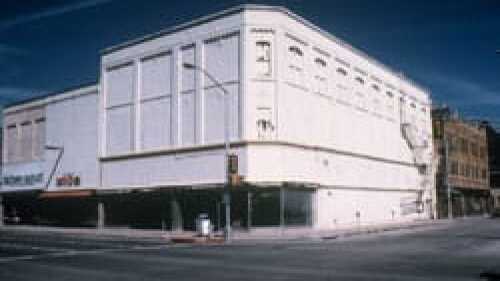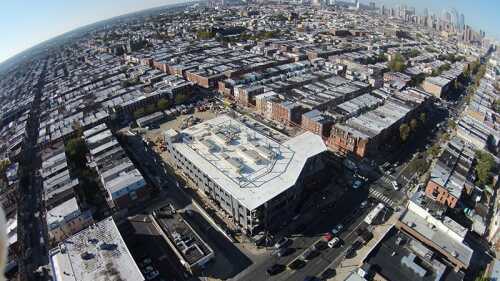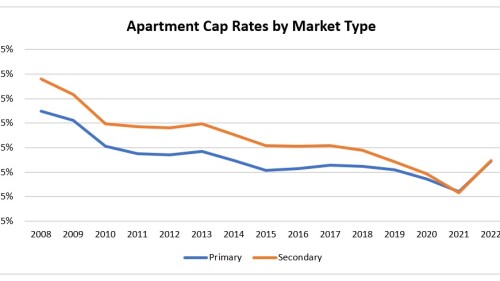Property Types
Hotels and Resorts
After undergoing the worst downturn in revenue and demand since the Great Depression, the hospitality industry made a rapid recovery in 2010. While markets like New York, Boston, Miami, and San Francisco are back to prerecession peaks, other markets are seeing increases only in the number of rooms booked, rather than pricing. Find out what else was said about this at the ULI Spring Council Forum.
Resort communities and hotels have suffered the blows of the recession and are beginning to see the light of day. A panel of developers at ULI’s 2011 Spring Council Forum in Phoenix discussed just how this sector is faring and where the opportunities lie now. Read to what degree the panelists think the resort sector is emerging from the recession.
According to Trepp LLC, the U.S. commercial mortgage-backed securities (CMBS) delinquency rate (comprised of the percentage of loans 30+ days delinquent, in foreclosure, or held on the books of the lender as real estate owned (REO)) increased 23 basis points (0.23 percent) in April to 9.65 percent, the highest rate in history and the largest increase on a monthly basis since December 2010. See the break out by property sector and read the key takeaways.
Industrial
Dynamic, large-scale projects that create new centers of activity can be catalysts of downtown revitalization. Sundance Square in Fort Worth, the Columbia Heights revitalization in D.C., and L.A. LIVE in downtown Los Angeles—the three 2010 ULI Awards for Excellence winners—are recent examples. Read how these projects created benefits that extend well beyond the neighborhoods where they stand.
2010 ended on a strong note with all-in 10-year mortgage spreads in 5.25%+/- range which should have proved attractive to all but the most jaded investors. But as they say, it’s still “early days” and few lenders have announced plans and targets for 2011.
This week’s Monday’s Numbers should be subtitled: “Credit Suisse Group Sells $2.8 Billion European Commercial Property Loan Portfolio for $1.2 Billion”
Mixed-Use
Real estate developers around the world are responding to increased consumer interest in cycling and walking as preferred modes of transportation by building projects adjacent to trails, bike paths, bike-sharing stations, and other infrastructure that supports human-powered mobility, according to
Active Transportation and Real Estate: The Next Frontier, a new ULI report.
Active Transportation and Real Estate: The Next Frontier, a new ULI report.
In 2012, the Children’s Hospital of Philadelphia, a private institution, partnered with the city to serve residents in south Philadelphia. This public/private effort is unprecedented in the variety of services located on a single site, the speed of public approvals, and financing.
ULI has announced an area in Atlanta’s Midtown neighborhood as the study site in the 14th annual ULI Hines Student Competition. The ideas competition provides teams the opportunity to devise a design and development program for parts of a large-scale site.
Multifamily
The next era of multifamily real estate will be led by managers that have the ability to produce alpha. The 2010s were defined by a seemingly never-ending bull market. The next cycle will remind investors of the importance of partnering with managers that apply an appropriate risk-reward analysis and have the skill and experience to add value at the real estate level to generate alpha.
ULI Asia Pacific Young Leaders hosted a forum on housing attainability in May with a focus on Australia, China, and Singapore. The event started with a short presentation by Ken Rhee, Senior Director of ULI China and the primary author of the newly released 2023 ULI Asia Pacific Home Attainability Index.
Innovative technology platforms already are helping many owners operate apartment buildings more efficiently and improve services for tenants. But experts say that is just the start of a revolution that could transform the multifamily segment.
Office
Despite the office sector’s current bleak outlook, the longer-term outlook is much rosier, speakers said at the ULI Virtual Fall Meeting.
Agile workplaces, equipped with the right technology to accommodate remote and in-person employees, and with equitable access to work-supporting resources, are likely to emerge in the pandemic’s aftermath, said experts from Zendesk, Gensler, and LinkedIn.
Culture, amenities, and locale are vitally important in drawing in today’s modern workforce, but COVID-19 is throwing a wrench into project planning. ULI Virtual Fall Meeting panelists discussed their projects, the idea of tech campuses, urban planning, and placemaking, comparing approaches and offering lessons learned from their projects.
Residental
Behind the new home construction, park improvements, and a rising downtown skyline that are attracting out-of-state migration, some longtime families in Boise, Idaho, are struggling to afford housing in a market that has seen rents more than double in the past decade.
Hospitality, tourism, and medical services remain the largest industries driving Florida’s economy; but hotel and restaurant workers, nurses, and hospital administration employees often struggle to find suitable housing in the state’s largest cities. Panelists at the 2018 ULI Florida Summit discussed innovative solutions to the problem.
Two architects address ten common concerns about shrinking parking requirements.
Retail
For decades, civic leaders have tried to revitalize Market Street, San Francisco’s central thoroughfare, only to see their efforts founder. “I sometimes call it the great white whale of San Francisco,” says Eric Tao, managing partner at L37 Development in San Francisco and co-chair of ULI San Francisco. “Every new mayor, every new planning director, every new economic development director has chased that white whale.” This year, however, an international competition of ideas hosted and run by ULI San Francisco, with support from the ULI Foundation, generated fresh momentum for reimagining the boulevard. The competition drew 173 submissions from nine countries and sparked new conversations about the future of downtown San Francisco.
The OAK project began in 2009, when a development firm set their sights on the corner of Northwest Expressway and North Pennsylvania Avenue, the state’s most important and busiest retail intersection. As the region’s only parcel capable of supporting a vertically integrated project of this scale and density, that land represented an opportunity to create something truly special.
As aging retail continue to evolve, one increasingly popular trend has been to redesign malls as town centers—recalling a time when such commercial districts were the heart and soul of a community. Mall–to–town center retrofits are emerging throughout the nation, especially in suburban communities, where pedestrian-friendly, mixed-use environments are highly attractive to millennials now raising families.












